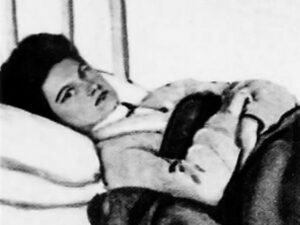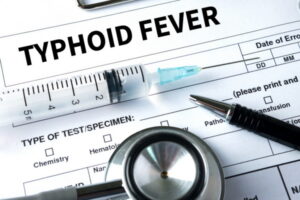
Mary Mallon, otherwise known as Typhoid Mary, holds the title of one of history’s most notorious cases as a disease carrier. She gained infamy for being linked to multiple outbreaks of typhoid fever in the early 20th century. Mallon was born to an Irish family and worked as a cook, which is how she spread the disease when she came to the United States.
What Causes Typhoid Fever?

Salmonella bacteria is the ultimate cause of the disease and is found in places with unsanitary conditions. It is virtually nonexistent in the United States and other developed countries, but cases remain in Africa and Asia; however, conditions were not that optimum in the United States back in the 19th century.
Typhoid fever was a severe and often deadly illness transmitted primarily through contaminated food and water. However, the concept of asymptomatic carriers—people carrying and spreading disease without showing symptoms—was not widely understood at that time.
About Typhoid Mary
Born in 1869 in Cookstown, County Tyrone, Ireland, Mallon immigrated to the United States at a young age. She worked as a cook for wealthy families in New York City, a profession that would ultimately lead to her unfortunate notoriety.
Despite never showing signs of the illness, she unknowingly spread the bacteria to numerous people through the food she prepared. The precise number of infections attributed to her is unknown, but it is believed to be significant.
How Was It Determined That It Was Mary?
The first documented case occurred in 1900 when she worked for a family in Mamaroneck, New York. Several members of the household fell ill, which was later determined to be due to typhoid fever. Investigators traced the source of the outbreak back to Mary. However, lacking a proper understanding of disease transmission, Mary was not held accountable, and she moved on to work for other families in the area.
Over the next several years, wherever Mary went, outbreaks of typhoid fever followed her. It wasn’t until 1906, during an outbreak at the Sloane Maternity Hospital in New York City, that her role as an asymptomatic carrier was established. George Soper, a sanitary engineer investigating the outbreak, discovered that Mary had worked at several affected households before the outbreak. He identified her as a likely source of the infection and attempted to have her cooperate with health authorities. Still, Mary vehemently denied being a carrier and refused to provide samples for testing.
Eventually, Soper enlisted the help of Dr. Sara Josephine Baker, a pioneering public health official, to track down Mary. After a lengthy investigation, Mary was located and apprehended. Tests confirmed that she was indeed a carrier of typhoid fever, although she remained healthy herself. Mary was placed in isolation against her will at a hospital on North Brother Island in New York City’s East River, where she would spend the next three years.
Lesson Not Learned
In 1910, Mary was released from isolation under the condition that she never work as a cook again and take precautions to prevent the spreading of the disease. However, Mary soon returned to her profession, using aliases to conceal her identity and continuing to work as a cook in various establishments throughout New York City.
In 1915, another outbreak of typhoid fever was linked to Mary, and she was once again apprehended and returned to isolation on North Brother Island, where she would spend the remainder of her life. Despite numerous appeals for release, Mary remained in isolation until her death in 1938.
Rights Violated?
The case of Typhoid Mary sparked significant public debate about the rights of individuals versus the need to protect public health. Mary herself vehemently maintained her innocence and objected to being forcibly quarantined, while health officials argued that she posed a significant risk to the public.
When Was the Disease Erraticated?
The vaccine for typhoid fever was developed in the late 19th century by Almroth Edward Wright, who made the discovery that led to the development of the first effective typhoid vaccine in 1896. This marked a significant advancement in the prevention of typhoid fever and laid the foundation for subsequent research and development in vaccines.
Conclusion
Asymptomatic individuals can pose a significant risk to others who are not infected with a disease. The story of Typhoid Mary continues to be studied and debated by historians, epidemiologists, and ethicists to this day. Her case serves as a cautionary tale about the importance of understanding disease transmission and the delicate balance between individual rights and public health.
